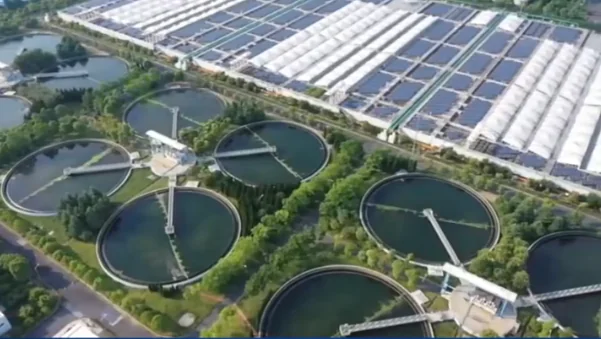With environmental regulations tightening worldwide, optimizing chemical usage has become critical for wastewater treatment plants and engineering projects.
In processes such as the Activated Sludge Method (A2/O) — widely applied in China, Southeast Asia, and the Middle East — knowing which chemical to add, where, and why is the key to achieving stable compliance and cost savings.
This article reviews 15 essential chemicals used across different treatment stages to help engineers optimize efficiency and reduce costs.

1️⃣ Pretreatment Stage: Balancing Water Quality & Reducing Downstream Load
Common agents: Caustic soda flakes, liquid caustic soda (30%), lime, demulsifiers, heavy metal scavengers, PAC, PAM.
- pH adjustment ⚖️
- Use NaOH flakes or 30% liquid caustic soda to neutralize influent.
- Lime is cheaper 💲 but generates more sludge — best for cost-priority scenarios.
- Demulsifiers & heavy metal scavengers 🧪
- Break down emulsified oil and colloids.
- Capture heavy metals like Cr, Cu, Ni.
- Work with PAC + PAM to form large flocs → easier flotation or sedimentation.
2️⃣ Biological Stage: Supplying C, N, P for Microbial Activity
Common agents: Carbon sources (glucose, sodium acetate), urea, phosphate fertilizer, soda ash, defoamers, PFS, ferrous sulfate.
- Anaerobic zone 🌑
- Add soluble carbon (sodium acetate, glucose) to promote phosphorus release by PAOs.
- Anoxic zone 🌫️
- Boost denitrification using compound liquid carbon sources for faster and more stable rates.
- Aerobic zone 🌞
- If pH is too low → add soda ash (Na₂CO₃) to support nitrification.
- If foam appears (high load or sludge aging) → apply silicone or polyether defoamers.
- For advanced P removal → add PFS or ferrous sulfate to precipitate phosphate.
- If phosphorus is deficient → dose phosphate fertilizer (KH₂PO₄) to maintain C:N:P = 100:5:1.

3️⃣ Sedimentation & Effluent Stage: Ensuring Clarification & Disinfection
Common agents: PAC, PAM, sodium aluminate polymer, algaecide, sodium hypochlorite.
- In secondary/tertiary clarifiers, add coagulants to enhance settling.
- If algae blooms occur, dose compound algaecides 🟢.
- Before discharge, disinfect with 10% NaClO solution or solid NaClO 🧼 to ensure compliance.
4️⃣ Sludge Dewatering Stage: Choosing the Right PAM
Common agents: Cationic PAM, anionic PAM, PAC.
- Organic sludge → Cationic PAM is most effective.
- Inorganic sludge → Anionic PAM works best with filter presses or belt presses.
- If solid–liquid separation is poor → combine with PAC for stronger coagulation.
✅ Optimization Takeaways
By selecting the right chemicals and dosing them precisely, wastewater plants can:
- Improve treatment efficiency 📈
- Reduce chemical waste ♻️
- Lower operational costs 💰
Chemicals like PAC, PAM, PFS, carbon sources, and defoamers are widely used in engineering projects.
📩 For technical data or quotations, feel free to contact us for customized solutions.
